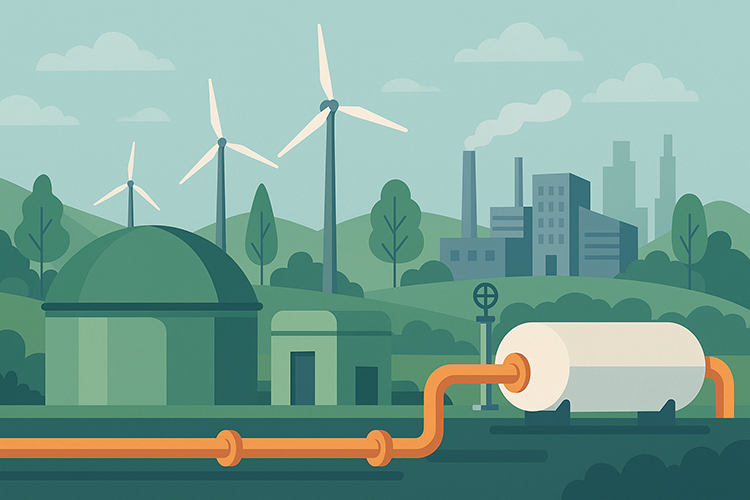Romania drafts emergency ordinance to fast-track biomethane into the gas grid
Romania is preparing a government emergency ordinance (GEO) to create a full legal pathway for producing, trading and injecting biomethane into the national gas system, a step long sought by developers as the country looks to decarbonise heating and cut landfill emissions. A draft published for consultation amends the Electricity and Natural Gas Law No. 123/2012—tightening definitions such as “biogas,” “biomethane,” “injection installation” and “guarantee of origin”—and sets out producer rights and duties broadly aligned with those for natural-gas producers. The proposal clarifies licensing, quality and odourisation requirements, metering and pressure-regulation obligations at the point of entry, and assigns connection and injection-facility costs to producers, while granting access rights to the distribution system subject to ANRE approval of technical and commercial rules.
Industry interest is high because Romania’s gas grid can move “green molecules” with relatively modest adaptations. While transmission lines total roughly 13,400 km and one major distributor alone operates about 26,000 km, recent analyses put the country’s combined gas distribution network at more than 50,000 km—ample reach to absorb early biomethane projects if interconnection standards are finalised.
The GEO lands alongside national targets that elevate biomethane from concept to policy. Romania’s Energy Strategy 2025–2035 sets a 5% biomethane share in gas flows by 2030 and 10% by 2050, with technical potential estimated at about 501 kilotons of oil equivalent from agricultural residues and waste by mid-century. The European Biogas Association and CEE market studies likewise rank Romania among the EU’s top growth candidates—around 2 bcm a year by 2030, rising toward 8 bcm by 2050—if permitting, grid access and offtake rules are streamlined.
Momentum is building at project level. In 2024, Black Sea Oil & Gas and DN Agrar announced plans for what they described as Romania’s first large biomethane plant, designed to inject into existing pipelines—an example of the “waste-to-grid” model the new ordinance aims to replicate at scale. The Ministry of Energy has also flagged the GEO as part of measures to cushion households and industry from the EU’s incoming ETS-2 costs by substituting fossil gas with renewable gas where feasible.
If adopted as drafted, the ordinance would give producers predictable interconnection rules, clarify responsibilities between plant operators and downstream system operators, and codify tariffing and easement procedures—key bottlenecks to date. The policy’s success will hinge on swift secondary regulations from ANRE and workable grid-quality standards, but Romania’s combination of feedstock, storage assets and a far-reaching gas network gives it a credible shot at becoming a regional biomethane leader.
Source CMS








